Promise Pegasus R6 & Mac Thunderbolt Review
by Anand Lal Shimpi on July 8, 2011 2:01 AM ESTThe Pegasus: Hardware
Promise offers two versions of the Pegasus: the R4 and R6. The names are easy enough to understand, they simply refer to the number of drive bays. Through Apple you can buy any of four configurations:
| Promise Pegasus Lineup | ||||||
| # of Bays | Drive Configuration | Default Capacity | Price | |||
| Promise Pegasus R4 4TB | 4 | 4 x 1TB RAID-5 | 2.7TB | $999 | ||
| Promise Pegasus R4 8TB | 4 | 4 x 2TB RAID-5 | 5.7TB | $1499 | ||
| Promise Pegasus R6 6TB | 6 | 6 x 1TB RAID-5 | 4.7TB | $1499 | ||
| Promise Pegasus R6 12TB | 6 | 6 x 2TB RAID-5 | 9.7TB | $1999 | ||
All of the configs ship with 3.5" 7200RPM hard drives and are configured as a single RAID-5 array by default, although Pegasus supports most of the common RAID formats (RAID 0/1/5/50/6/10).
The 12TB Pegasus R6 we received for review came with 6 x 2TB Hitachi Deskstar 7K3000 drives. These are four platter drives with 64MB buffers. I did try installing Seagate 3TB drives and SandForce SF-2281 SSDs in the system, both of which worked. I did run into some reliability issues with the Pegasus R6 configured with 4 x SF-2281 SSDs, however it's unclear whether they were caused by the drives themselves, the Pegasus or a combination of the two.
Internally Promise uses a PMC Sierra PM8011 8-port SAS-2 RAID controller. This is an 8-lane PCIe Gen 2 controller with eight SAS/SATA 6Gbps ports. On the R6 obviously only six of those ports are functional. The PM8011 has an embedded 600MHz MIPS processor and is paired with 512MB of DDR2-533.
The Pegasus chassis is made out of aluminum, similar to the unibody MacBook Pro and iMac but not quite identical. The color is a bit lighter with a more coarse grain. The metal construction combined with the six 3.5" drives gives the Pegasus R6 its 20.4 lbs weight (the R4 weighs in at around 15 lbs).
The front of the chassis is pretty clean. The glossy black strip on the left of the unit is home to the power button and the two Thunderbolt indicators. There are two Thunderbolt ports on the Pegasus, one connects to your Mac while the other connects to any other DisplayPort/Thunderbolt devices in the chain. Occupy a single port and one indicator lights up, occupy both and you get two:

The power button burns blue when everything is functional, orange during startup and red if there's a problem with the array. Powering down the Pegasus requires that you hold the power button for ~10 seconds until the button glows red then release in order to avoid any accidental shutdowns.
The R6 has six removable 3.5" drive bays that accept 2.5" drives as well. The screws Promise provides with the Pegasus are too large for SSDs so you'll have to supply your own if you want to replace the HDDs with SSDs down the road.
Ejecting and inserting the Pegasus' drives is incredibly smooth. There's a large square eject button on the front of each drive carrier - depress it and the handle pops out. Pull on the handle and the drives slide out perfectly. There's surprisingly little resistance to inserting the drives completely, the entire motion is just very fluid.
Each carrier has two LEDs - status and activity. Blue indicates proper operation while red indicates a problem.
The Pegasus' on-board RAID controller doesn't care about the order in which you install drives for a single array (e.g. you can swap carriers 2 & 5 and your array will still function, provided you do so while the Pegasus is powered down). Note that if you do remove more than one drives from an live RAID-5 array you'll lose all of your data, even if the array was idle when you pulled the drives. You can remove a single drive and be fine, although you'll have to resyncrhonize the array when you insert the missing drive. A full RAID-5 rebuild takes about 7 hours on the Pegasus R6. The array is still usable during its synchronization process.
Around back there are two Thunderbolt ports and a serial port, the latter presumably for firmware updates/direct access to the on-board controller (the port is currently undocumented).
There are two fans in the Pegasus R6: a large ~100mm fan to cool all of the drive bays and a small ~40mm fan to cool the integrated PSU. The Pegasus ships with a 250W 80Plus Bronze certified power supply. The PSU isn't intended to be user serviceable and can't be removed without disassembling the Pegasus.
The Pegasus is powered by a standard 3-pin AC power connector. Promise supplies a cable although any standard PC power cable will work.


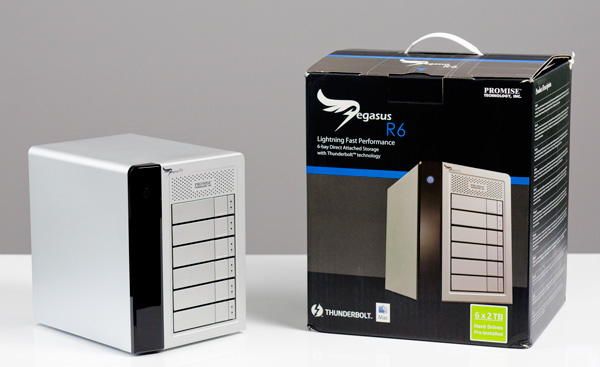
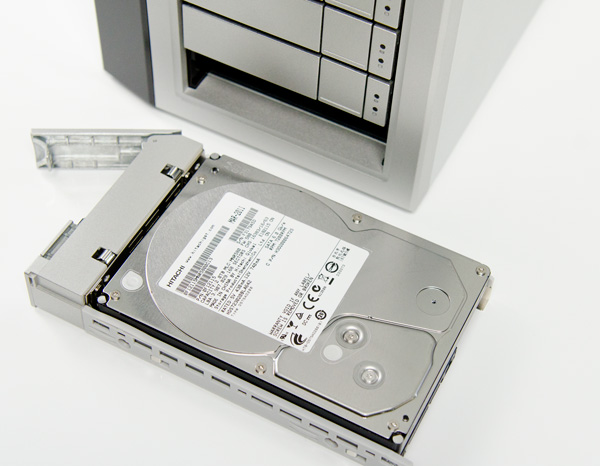
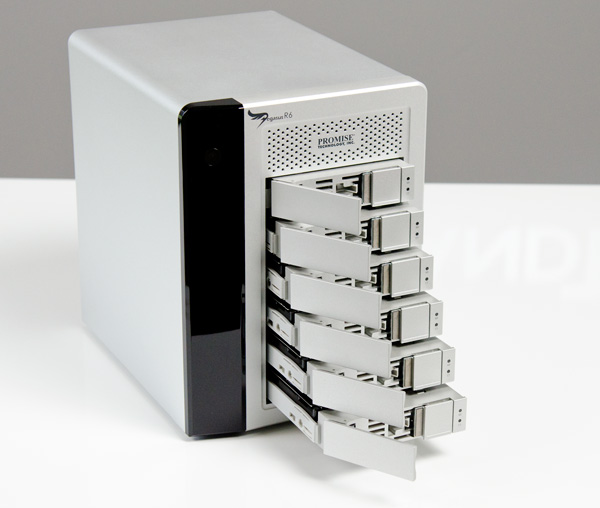
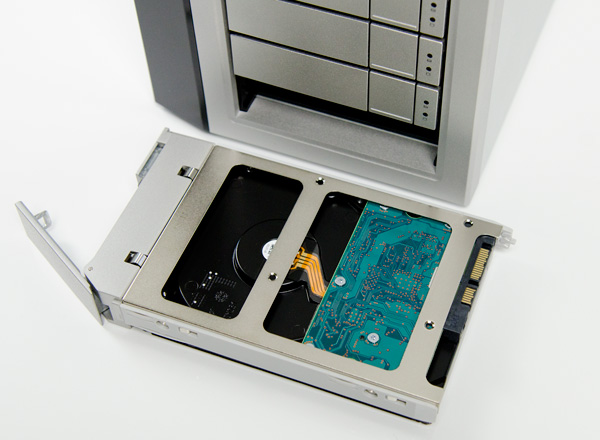
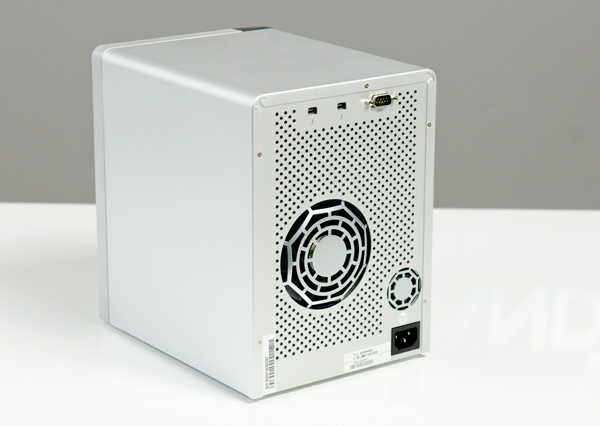














88 Comments
View All Comments
PrincessNybor - Tuesday, July 12, 2011 - link
I'm actually looking forward to using Target Display Mode when I pick up my new 27" iMac this month (just holding out for Lion). My work computer is a 15" MacBook Pro with Thunderbolt, and while the display is good for a portable, I'd love access to a 27" display! Some of the applications I work with won't be installed on the iMac, since that will be a personal desktop and not a work machine. This is a good solution for others in my situation.osteopathic1 - Thursday, July 14, 2011 - link
I just plugged in my old 23" Cinema Display DVI into a $6 minidisplay port/DVI adapter and it worked like a charm.onebear - Saturday, September 24, 2011 - link
Please see this discussions from Apple Support forum.https://discussions.apple.com/thread/3181015
It is not working with iMac 2011. And having many unsolve issues.
nanofunk.net - Saturday, January 7, 2012 - link
there are lots of known problems and promise won't answer or react on any of them.see a roundup of problems here:
http://www.nanofunk.net/caution-with-promise-pegas...
also there are other issues as reported in the apple forums:
https://discussions.apple.com/thread/3181015?start...
the only thing we can currently do is to boycott promise until the give an official statement and release a bugfix to support larger HDDs and address the issues/bugs (drive-ejecting bugs, etc.)
Rdubs - Friday, April 20, 2012 - link
Anyone know if I can throw in 4x 4tb 3rd party drives into a R4?What's the limit? Can't find a list of what mfg' s hard drives play well
with R4.
Many thanks
frabber - Thursday, October 25, 2012 - link
anybody know whether this is possible? with some kind of thunderbolt enabled motherboard?odedia - Monday, April 14, 2014 - link
WD RED 4TB drives are pretty affordable now, for the price of the 8Tb R4, I can get a diskless R4 and 4 red drives, resulting in 16tb total. They question is, would the RED drives match the performance of the R4? They are 5400 rpm drives, though quite reliable (much better than a green drive).badex - Thursday, December 31, 2015 - link
Hi,Have had my pegasus R4 for a couple of years. its been effective but i think i'd like to take a step up to using SSD drives. what SSD drives would you recommend for the pegasus R4?
thanks